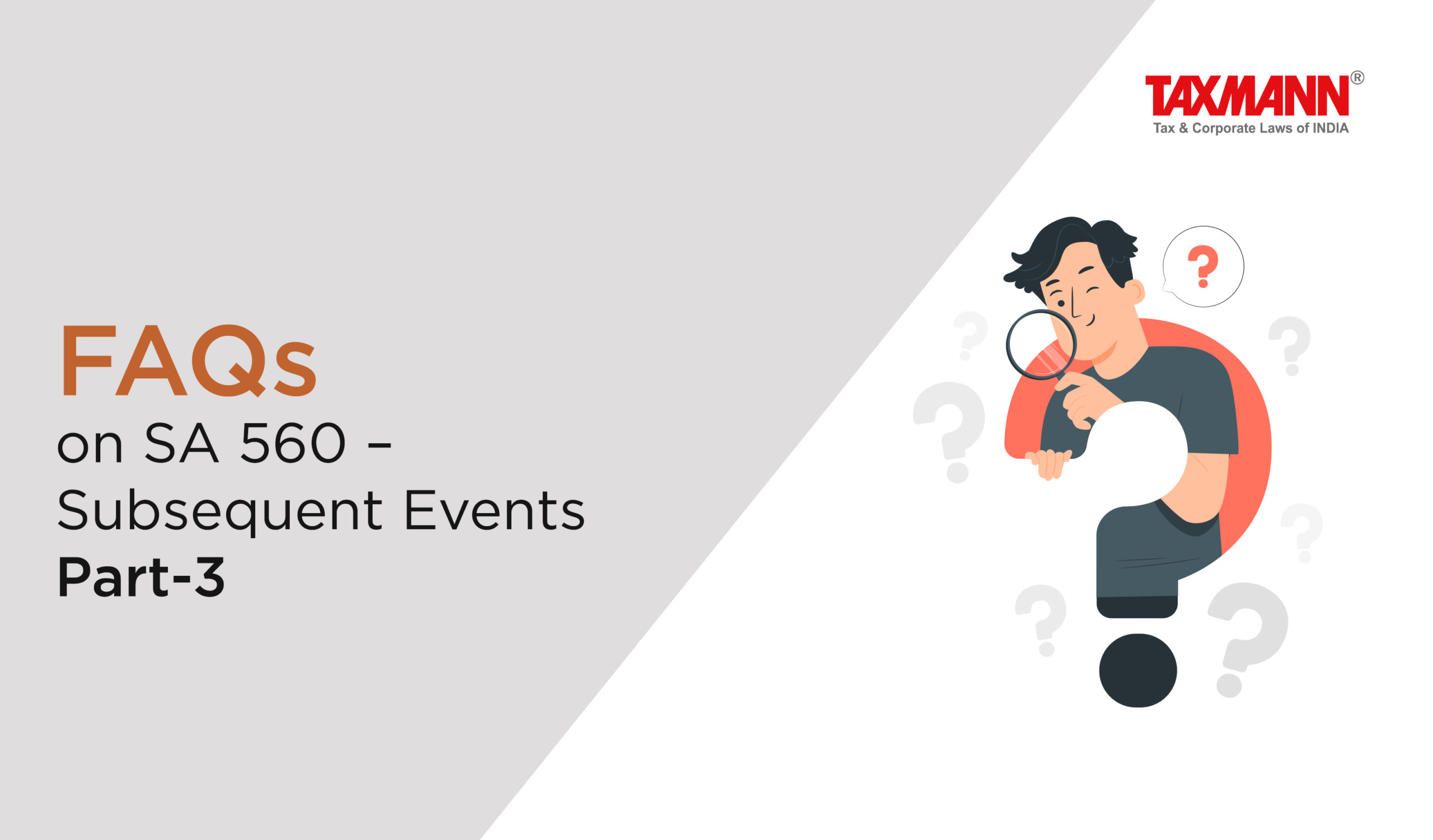FAQs on SA 560 – Subsequent Events | Part-3
- Blog|News|Account & Audit|
- 2 Min Read
- By Taxmann
- |
- Last Updated on 22 June, 2023

SA 560 deals with the auditor’s responsibilities relating to subsequent events in an audit of financial statements. It does not deal with matters relating to the auditor’s responsibilities for other information obtained after the date of the auditor’s report, which is addressed in SA 720(Revised), “The Auditor’s Responsibilities Relating to Other Information”. However, such other information may bring to light a subsequent event that is within the scope of this SA. The objectives of the auditor are to obtain sufficient appropriate audit evidence about whether events occurring between the date of the financial statements and the date of the auditor’s report that require adjustment of, or disclosure in, the financial statements are appropriately reflected in those financial statements; and respond appropriately to facts that become known to the auditor after the date of the auditor’s report, that, had they been known to the auditor at that date, may have caused the auditor to amend the auditor’s report. This discussion involves some commonly asked FAQs on subsequent events.
I. What is the requirement for the auditor regarding written representations from management and those charged with governance?
The auditor is required to request management and, if necessary, those responsible for governance to provide a written representation as per SA 580, “Written Representations.” This representation should confirm that all events that occurred after the date of the financial statements and require adjustment or disclosure according to the applicable financial reporting framework have been appropriately adjusted or disclosed.
II. What are the auditor’s obligations regarding the financial statements after the date of the auditor’s report?
The auditor is generally not required to perform any audit procedures regarding the financial statements after the date of the auditor’s report, whether before or after the statements are issued. However, there is an exception. If a fact comes to the auditor’s attention after the date of the auditor’s report that, if known at the time of issuing the report, might have led to a modification of the report, then the auditor has responsibilities outlined in paragraphs 10 to 17 of SA 560. These paragraphs address the actions and obligations of the auditor when such post-reporting date facts become known.
III. What should the auditor do regarding changes in internal financial controls over financial reporting that occur after the date of auditing but before the date of the auditor’s report?
In accordance with paragraph 144 of the “Guidance Note on Audit of Internal Financial Controls Over Financial Reporting” issued by ICAI, the auditor is required to inquire with management about any changes in internal financial controls over financial reporting or significant factors that may affect such controls after the date of auditing but before the date of the auditor’s report. The auditor should obtain written representations from management regarding these changes or factors and consider their implications, if any, on the audit report, including the reporting on internal financial controls over financial reporting (IFCoFR).
Click Here To Read The Full Article
Disclaimer: The content/information published on the website is only for general information of the user and shall not be construed as legal advice. While the Taxmann has exercised reasonable efforts to ensure the veracity of information/content published, Taxmann shall be under no liability in any manner whatsoever for incorrect information, if any.

Taxmann Publications has a dedicated in-house Research & Editorial Team. This team consists of a team of Chartered Accountants, Company Secretaries, and Lawyers. This team works under the guidance and supervision of editor-in-chief Mr Rakesh Bhargava.
The Research and Editorial Team is responsible for developing reliable and accurate content for the readers. The team follows the six-sigma approach to achieve the benchmark of zero error in its publications and research platforms. The team ensures that the following publication guidelines are thoroughly followed while developing the content:
- The statutory material is obtained only from the authorized and reliable sources
- All the latest developments in the judicial and legislative fields are covered
- Prepare the analytical write-ups on current, controversial, and important issues to help the readers to understand the concept and its implications
- Every content published by Taxmann is complete, accurate and lucid
- All evidence-based statements are supported with proper reference to Section, Circular No., Notification No. or citations
- The golden rules of grammar, style and consistency are thoroughly followed
- Font and size that’s easy to read and remain consistent across all imprint and digital publications are applied



 CA | CS | CMA
CA | CS | CMA
